I am an R novice.
I have been able to get my header-less data into columns:
my_data<- separate(my_data,col = "V1",into = c("Date", "Tool","Dept","Port","Host","Min","Max"),sep = ":")
It looks like this:
Date Tool Dept Port Host Min Max
1: 03-Mar-2019 toolset Headquaters 1234 host.com 1 7
2: 10-Mar-2019 toolset Headquaters 1234 host.com 0 7
3: 17-Mar-2019 toolset Headquaters 1234 host.com 1 7
I plot it:
> p1 <- ggplot() + geom_line(aes(y = Max, x = Date),data = My_data)
> p1
But all I get is this:
How can I plot the min/max over time?
EDIT1: These are dates, not factors or anything else
EDIT2: I tried the suggestion:
my_data$Date <- as.Date(lmt$Date, "%d-%b-%Y")


